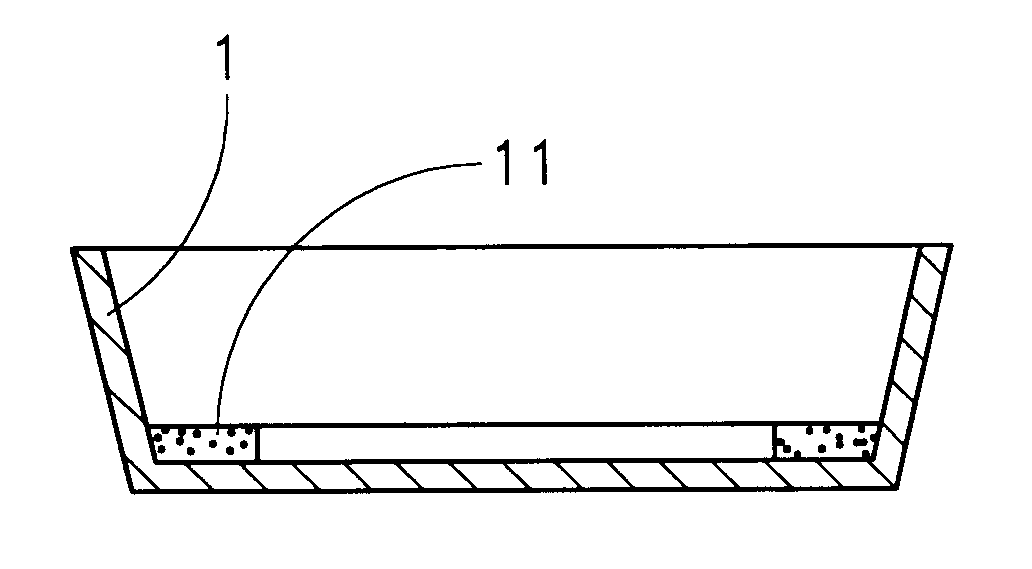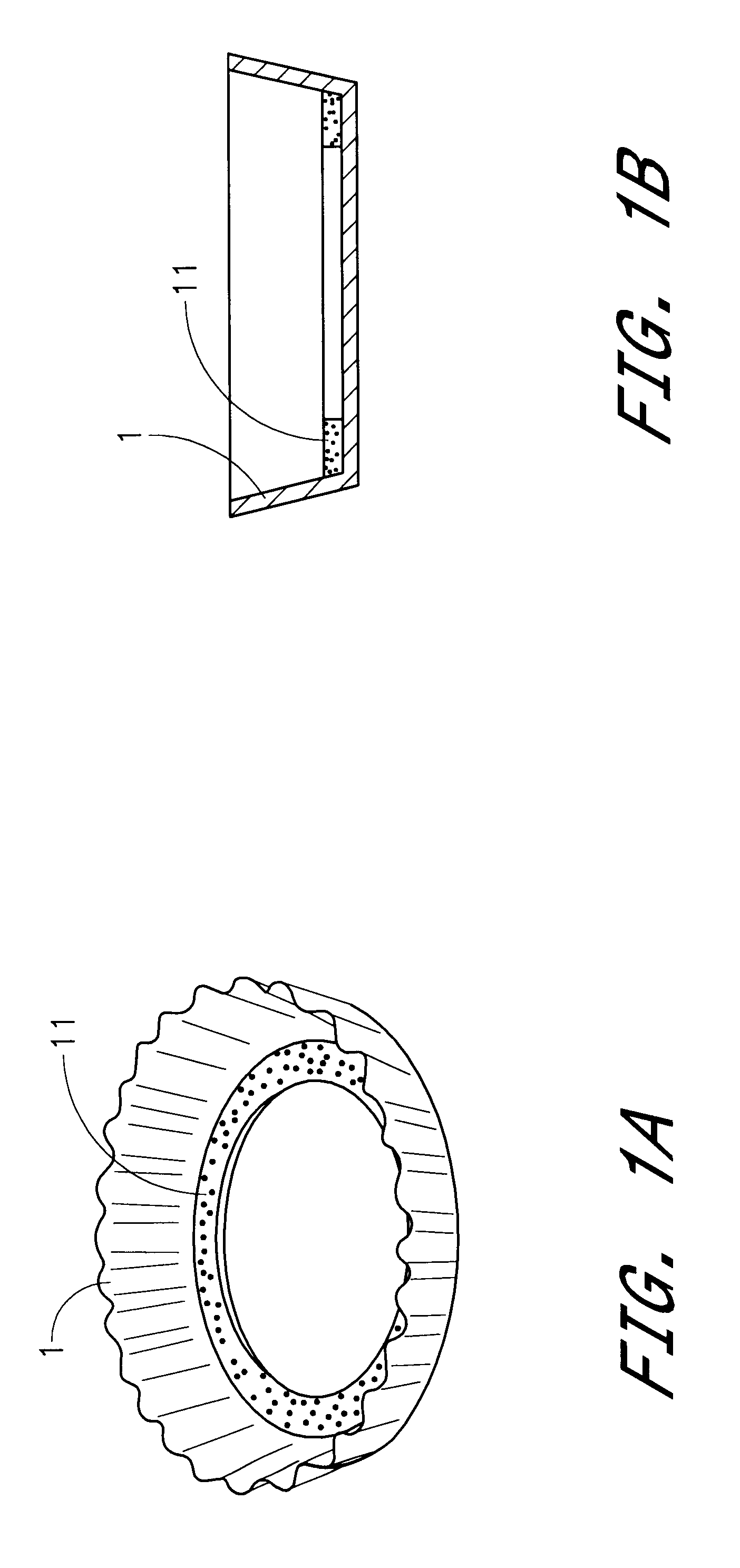Container assembly provided with anitbacterial agent against slow-leak bacteria
- Summary
- Abstract
- Description
- Claims
- Application Information
AI Technical Summary
Benefits of technology
Problems solved by technology
Method used
Image
Examples
experiment 1
Using an expanded-foam polyethylene sheet (expansion of five magnifications) having a thickness of 0.9 mm, which contained 2% silver zeolite, a doughnut-shaped liner having an external diameter of 28 mm and an internal diameter of 18 mm was stamped out. The liner was fixed to the inner surface of a cap having an internal diameter of 28 mm. A hundred PET container assemblies, each having had the rim of the mouth portion scratched with sand paper, were filled with milk-containing coffee by hot-packing at a temperature of 85.degree. C., capped with the above caps, and then subjected to overturning-sterilization for 50 seconds. As control products, a hundred PET container assemblies, each having had the rim of the mouth portion scratched with sand paper, were filled with milk-containing coffee by hot-packing at a temperature of 85.degree. C., capped with conventional caps having conventional liners made of expanded-foam polyethylene, and then subjected to overturning-sterilization for 5...
experiment 2
A clear coating material using epoxy resin, which contained 2% silver zeolite, was applied to the rim of a mouth portion of each PET container assembly, and dried. A hundred of the above PET container assemblies, each having had the rim of the mouth portion scratched, were filled with orange juice by hot-packing at a temperature of 82.degree. C., capped with conventional caps, and then subjected to overturning-sterilization for 50 seconds. As control products, a hundred conventional PET container assemblies, each having the rim of the mouth portion scratched, were filled with orange juice by hot-packing at a temperature of 85.degree. C., capped with conventional caps, and then subjected to overturning-sterilization for 50 seconds. The thus-obtained container assemblies were stored in a room at room temperature for three weeks, and then cultured at a temperature of 38.degree. C. for 24 hours. The number of bacteria cultured in each container assembly was measured. As a result, no bac...
PUM
 Login to View More
Login to View More Abstract
Description
Claims
Application Information
 Login to View More
Login to View More - R&D
- Intellectual Property
- Life Sciences
- Materials
- Tech Scout
- Unparalleled Data Quality
- Higher Quality Content
- 60% Fewer Hallucinations
Browse by: Latest US Patents, China's latest patents, Technical Efficacy Thesaurus, Application Domain, Technology Topic, Popular Technical Reports.
© 2025 PatSnap. All rights reserved.Legal|Privacy policy|Modern Slavery Act Transparency Statement|Sitemap|About US| Contact US: help@patsnap.com



